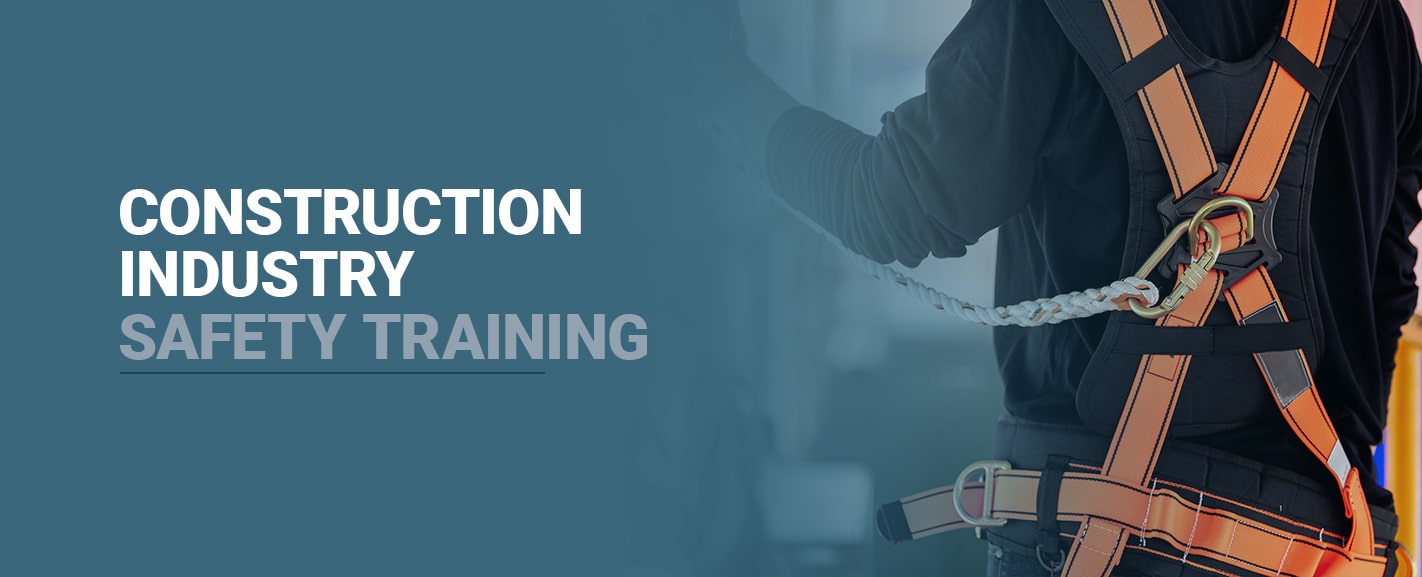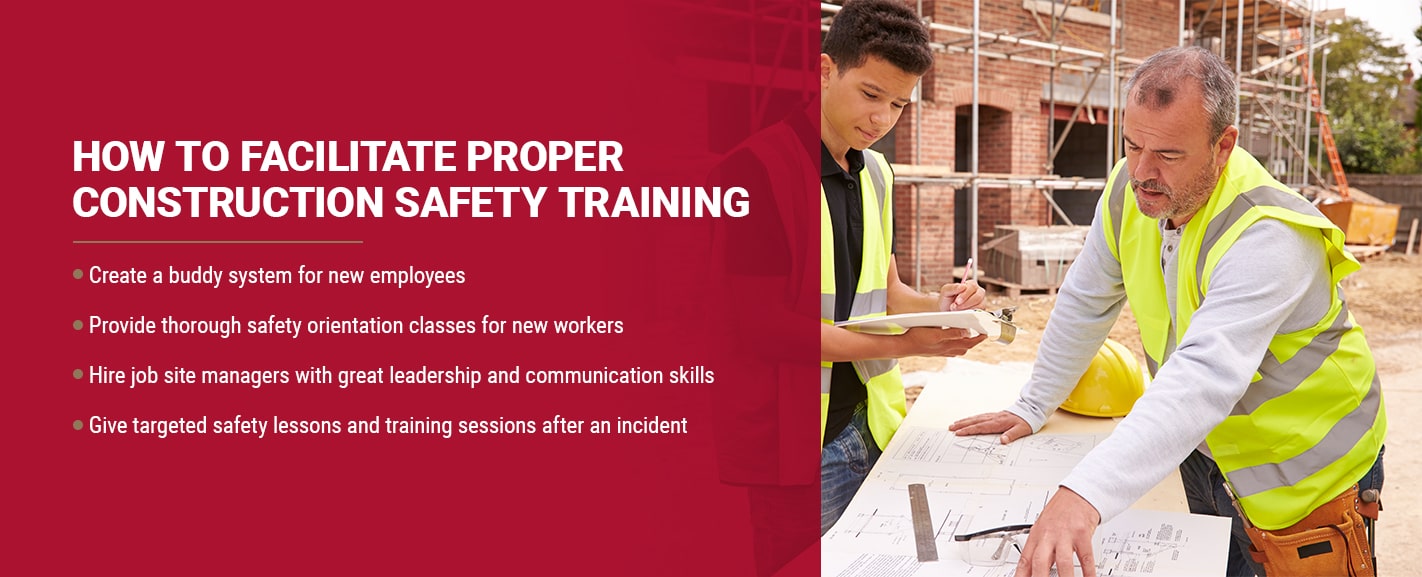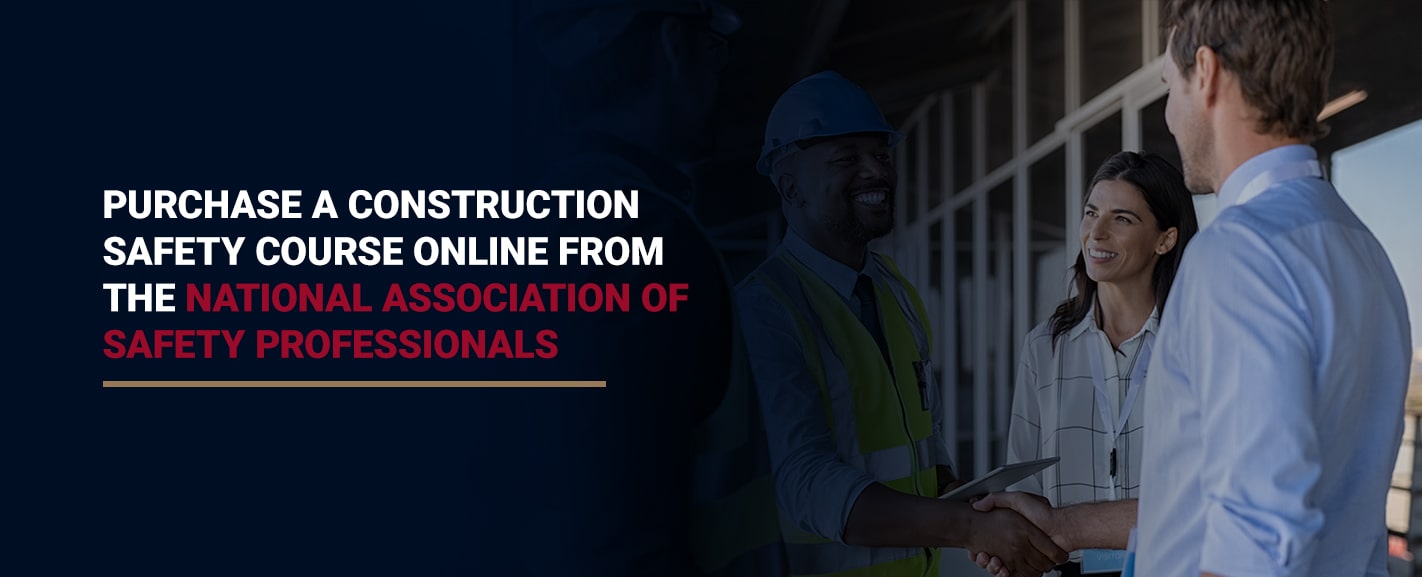Construction Specialist Designations
These Specialist Designations assure all employers or potential employers that the practitioner has exceptional acquired knowledge, skills, and abilities in the specified area. This series of Construction Safety Specialist Courses covers the OSHA requirements of 29 CFR 1926 as well as other regulatory requirements for construction sites, general industry, municipalities and federal government workplaces where construction may occur.
ASLS
8 hoursASLS
8 hoursBBS
13 hoursBBS
13 hoursCSS
13 hoursCSS
13 hoursCDS
13 hoursCDS
13 hoursESS
13 hoursESS
13 hoursFPS
13 hoursFPS
13 hoursFSS
13 hoursFSS
13 hoursHPTS
8 hoursHPTS
8 hoursHCS
13 hoursHCS
13 hoursIIS
13 hoursIIS
13 hoursJHA
13 hoursJHA
13 hoursLTS
13 hoursLTS
13 hoursMGS
13 hoursMGS
13 hoursORS
13 hoursORS
13 hoursPES
13 hoursPES
13 hoursSSS
13 hoursSSS
13 hoursSDS
8 hoursSDS
8 hoursSES
8 hoursSES
8 hoursTES
13 hoursTES
13 hoursWCB
13 hoursWCB
13 hoursVPS
13 hoursVPS
13 hoursWWS
13 hours
Construction Industry Safety Training
Every day, construction workers put their own safety at risk to complete difficult jobs. These essential tasks include bridge erection, residential construction, road paving, demolitions and structural alterations and repairs. Without construction workers’ dedication and efforts, society would be much different today.
Construction activities often expose workers to various life-threatening hazards like electrocution, falls and hard impacts. These risks make proper construction safety training essential to every worker’s wellbeing. It’s your duty to ensure your workers practice construction safety and get the training they need for success.
Construction Safety Certificates
Choosing the right safety training program for your workers is crucial for operating a successful construction business. Proper training is also necessary for passing inspections from the Occupational Safety and Health Administration (OSHA). When your workers and managers have the right safety certificates, you know they will show up to your job site every day understanding how to work safely. They’ll also know what to do if a dangerous situation does arise.
Common wisdom says you should train an employee to do the task you hired them to do so they can work effectively. But if that job puts the worker in risky situations, they may lack the confidence to do their job or accidentally get hurt trying. When it comes to the construction industry, safety training is as important — or even more important — than training employees to perform a particular task on the job site.
Employee safety training also holds managers and other safety professionals accountable. Maintaining a safe environment on a construction site requires group participation. It’s a team effort — if workers lack the proper training, the job site will be less safe. Likewise, if managers and safety professionals forget to enforce policies and rules designed to protect workers, everyone will be at a greater risk of injury. Job site safety demands the participation of everyone involved.

How to Facilitate Proper Construction Safety Training
Fostering a safer environment at work starts with the right training. Here are four ways you can train your employees for better safety after having them take OSHA-compliant safety courses:
- Create a buddy system for new employees: Pair new employees with longtime workers. This pairing will give the new people a chance to learn the ropes from someone who has been working safely in the industry for a while. After about a month, managers can see if new employees are ready to be safely independent on the job site.
- Provide thorough safety orientation classes for new workers: You should put each new hire through a safety training session to help them learn the basics of construction safety before getting out on the site. Cover topics like work conduct, hazard recognition and prevention.
- Hire job site managers with great leadership and communication skills: Your supervisors and managers should undergo training to help them be the best leaders they can be. Managers should be able to properly communicate on the job site to help direct other workers and maintain a safe working environment.
- Give targeted safety lessons and training sessions after an incident: When an incident occurs, your workers could experience some anxiety over whether it will happen again. Help alleviate these worries by holding targeted safety lessons to better prepare your workers to get back to work and avoid making the same mistake again.
How Does Employee Safety Training Improve a Construction Site?
Employee safety training can improve your job site in more ways than you might realize. When workers and managers receive the proper safety training, your construction site can improve in the following ways:
- Financial risks: The last thing you want is an unexpected expense to come along during your project. Workers’ compensation, new safety upgrades and other cost increases can blindside you halfway through your construction timeline. Make sure your job site is safe from the beginning and that everyone is properly trained to avoid these unexpected financial risks.
- Legal risks: You also want to avoid legal repercussions from failing to provide adequate or safe working environments for your employees. Legal fees can grow exponentially, and you could dig yourself into quite a financial pit. Lower your risk of encountering legal trouble by training your employees and fostering a safer construction site.
- Project risks: Failing to invest in safety could put your entire project at risk. Various job site hazards can slow down your progress, cost you more money or demand more resources to overcome. And of course, you need your employees to get the job done. Even small injuries could force you to postpone your deadline.
- Environmental risks: The environment can even pose a threat to your workers. Floods, hurricanes and earthquakes are all examples of natural phenomena that proper safety training can help your employees prepare for.
Why Is Construction Safety Training Important?
Data from the United States Bureau of Labor Statistics show the importance of construction safety training. In 2019, 1,102 construction workers experienced fatal injuries on the job site. That number represents over 20% of the total workplace deaths nationwide during the year. These numbers alone paint a vivid picture of why construction workers need safer working practices. And with so many types of construction work, the risks are numerous. Here are some of the most common fatal injuries that construction workers face every day:
- Falling from heights
- Being struck by a moving vehicle
- Being struck by a moving object
- Being trapped by something overturning or collapsing
- Making contact with moving machinery
- Being injured by an animal
- Experiencing explosion exposure
- Electrocution
- Drowning
- Asphyxiation, often a result of poor oxygen levels in trenches or enclosed spaces
- Slipping, falling or tripping from ground level
Construction safety training is one of the first and best steps you can take toward limiting the above fatal injuries from happening on your construction site. When you properly train your workers, they’ll enjoy fewer risks and more confidence in their work. Your workers will be able to spot risks as they occur and even take measures to avoid them altogether. Everyone working on your site will stay safe and productive, keeping the project moving.
Additionally, OSHA has drafted several official acts that require employee safety training and employer participation in making sure proper training happens. Failing to put your employees through safety training — or lacking the correct documentation to prove you have — is grounds for fines and citations. Safety is the top priority, but avoiding these repercussions from OSHA is also an important reason for keeping your workers trained in the best and latest safety practices.

Purchase a Construction Safety Course Online From the National Association of Safety Professionals
Our Specialist Designations assure all potential employers that the participant has outstanding skills, abilities and knowledge in the specified area. This series of Construction Safety Specialist Courses covers the OSHA requirements of 29 CFR 1926 as well as other regulatory requirements for construction sites, general industry, municipalities and federal government workplaces where construction may occur.
Take your next step toward worker safety today with one of our Construction Safety Courses. And if you want to learn more, feel free to contact us online. We look forward to helping you achieve a safer workplace for your construction employees.






















